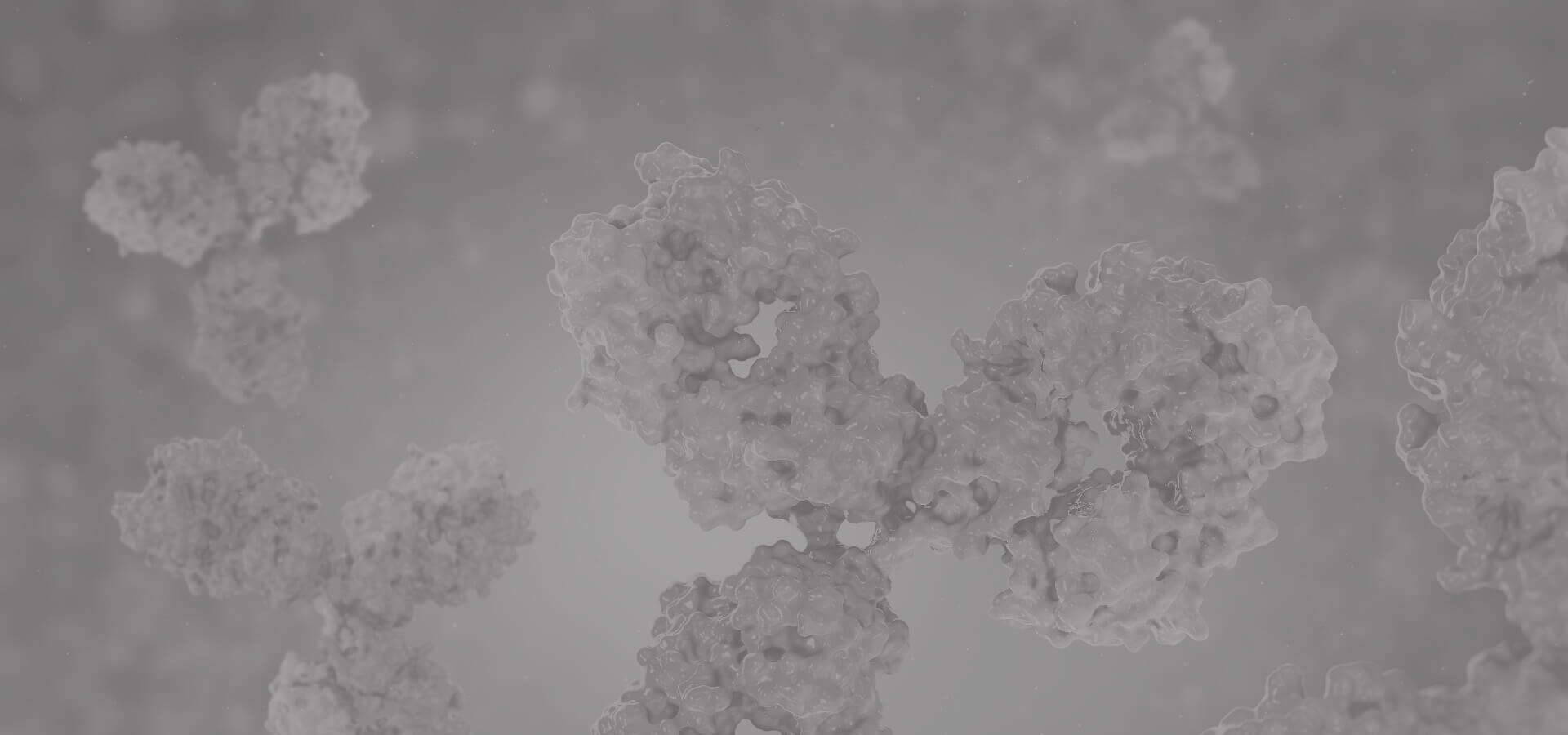PDX1 Antibodies
Background
PDX1 is a transcription factor that plays a core role in the development and function maintenance of the pancreas in vertebrates. This protein dominates the differentiation and maturation of pancreatic endocrine cells by regulating the expression of hormone genes such as insulin, and maintains the homeostasis balance of glucose. Diabetic patients often have abnormal expression of PDX1, as its functional disorder can directly affect the activity of pancreatic β cells. This gene was simultaneously identified by multiple laboratories in 1994. The study of its three-dimensional structure revealed the specific binding mechanism between the homologous domain and the DNA target sequence. As a key regulatory factor for pancreatic development, the research on PDX1 has greatly advanced people's understanding of the pathogenesis of diabetes and the molecular regulatory network of cell directed differentiation, providing an important theoretical basis for regenerative medicine in the treatment of metabolic diseases.
Structure of PDX1
PDX1 is a transcription factor protein with a molecular weight of approximately 31 kDa. There are slight differences in its molecular weight among different species, which mainly result from the amino acid sequence variations of the DNA-binding domain.
| Species | Human | Mouse | Rat | Zebrafish | African clawed toad |
| Molecular Weight (kDa) | 31.0 | 30.8 | 30.9 | 29.5 | 28.7 |
| Primary Structural Differences | Contains homeodomain and transcriptional activation domain | The N-terminal sequence shows species specificity | The C-terminal regulatory region is slightly different | Homologous domains are conserved | The functional domains are basically retained |
This protein is composed of 284 amino acids. Its three-dimensional structural feature is a highly conserved homologous domain, composed of three α -helices forming a typical helical-rotation-helical motif. The second and third α -helices are responsible for recognizing and binding to specific sequences in the DNA large groove, among which the asparagine residue at position 47 plays a key role in DNA binding specificity. The N-terminal transcriptional activation domain is rich in proline and regulates pancreatic development and β -cell function through interaction with other transcription factors.
 Fig. 1 Regulation of mammalian PDX1 gene by multiple factors.1
Fig. 1 Regulation of mammalian PDX1 gene by multiple factors.1
Key structural properties of PDX1:
- Contains the homeodomain to form a helix-turn-helix motif
- Conservative DNA binding interface consists of three alpha helix
- The N-terminal transcriptional activation domain is rich in proline residues
Functions of PDX1
The core function of the PDX1 gene is to regulate pancreatic development and maintain β -cell function. In addition, it is also involved in key physiological processes such as maintaining glucose homeostasis and the differentiation of endocrine cells.
| Function | Description |
| Regulation of pancreatic development | Dominant pancreatic primordia formation and endocrine progenitor cell differentiation, to ensure the normal development of islet. |
| Insulin gene transcription | Specifically bind to the promoter region of the insulin gene to activate its transcriptional expression. |
| Maintenance of β -cell function | Regulate the expression of multiple β -cell-specific genes and maintain the identity and function of mature β cells. |
| Glucose sensing regulation | Participate in the insulin secretion pathway stimulated by glucose to ensure the balance of blood glucose homeostasis. |
| Cell differentiation orientation | By regulating downstream target genes, precursor cells are guided to differentiate into endocrine lineages. |
The binding of PDX1 to DNA exhibits synergistic characteristics, and its affinity is regulated by post-translational modifications. This dynamic regulatory mechanism enables it to precisely respond to changes in blood glucose concentration, thereby playing a core role in metabolic homeostasis.
Applications of PDX1 and PDX1 Antibody in Literature
1. Wang, Ning, et al. "PDX1 and MC4R genetic polymorphisms are associated with type 2 diabetes mellitus risk in the Chinese Han population." BMC Medical Genomics 14.1 (2021): 249.https://doi.org/10.1186/s12920-021-01037-3
Studies have confirmed that the polymorphisms of PDX1 and MC4R genes are associated with the risk of T2DM in the Chinese Han population. In particular, PDX1-RS9581943 has a protective effect, providing a new target for disease assessment.
2. Salguero-Aranda, Carmen, et al. "Pdx1 is transcriptionally regulated by EGR-1 during nitric oxide-induced endoderm differentiation of mouse embryonic stem cells." International Journal of Molecular Sciences 23.7 (2022): 3920. https://doi.org/10.3390/ijms23073920
Studies have shown that the transcription factor EGR-1 inhibits its expression by binding to the Pdx1 promoter, and its binding ability is regulated by the DNA methylation and acetylation states. Inhibiting EGR-1 may guide pluripotent stem cells to differentiate into PDX1-dependent cell lines.
3. Ebrahim, Nour, Ksenia Shakirova, and Erdem Dashinimaev. "PDX1 is the cornerstone of pancreatic β-cell functions and identity." Frontiers in molecular biosciences 9 (2022): 1091757. https://doi.org/10.3389/fmolb.2022.1091757
The review indicates that the transcription factor PDX1 is a key target for the treatment of diabetes. By understanding its genetic and epigenetic regulation and optimizing the differentiation protocol, it is expected to achieve cell therapy targeting the cause.
4. Baumel-Alterzon, Sharon, and Donald K. Scott. "Regulation of Pdx1 by oxidative stress and Nrf2 in pancreatic beta-cells." Frontiers in Endocrinology 13 (2022): 1011187. https://doi.org/10.3389/fendo.2022.1011187
The review indicates that oxidative stress leads to β -cell dysfunction by inhibiting the expression and function of PDX1. Activating the Nrf2 antioxidant pathway can maintain PDX1 levels and may become a potential therapeutic strategy for diabetes.
5. Usher, Emery T., and Scott A. Showalter. "Biophysical insights into glucose-dependent transcriptional regulation by PDX1." Journal of Biological Chemistry 298.12 (2022): 102623. https://doi.org/10.1016/j.jbc.2022.102623
The review points out that PDX1 is the core regulatory factor of insulin transcription, but its disordered protein region makes the molecular mechanism difficult to analyze. The new method is expected to clarify the details of its effect and provide a new target for the treatment of pancreatic diseases.
Creative Biolabs: PDX1 Antibodies for Research
Creative Biolabs specializes in the production of high-quality PDX1 antibodies for research and industrial applications. Our portfolio includes monoclonal antibodies tailored for ELISA, Flow Cytometry, Western blot, immunohistochemistry, and other diagnostic methodologies.
- Custom PDX1 Antibody Development: Tailor-made solutions to meet specific research requirements.
- Bulk Production: Large-scale antibody manufacturing for industry partners.
- Technical Support: Expert consultation for protocol optimization and troubleshooting.
- Aliquoting Services: Conveniently sized aliquots for long-term storage and consistent experimental outcomes.
For more details on our PDX1 antibodies, custom preparations, or technical support, contact us at email.
Reference
- Ebrahim, Nour, Ksenia Shakirova, and Erdem Dashinimaev. "PDX1 is the cornerstone of pancreatic β-cell functions and identity." Frontiers in molecular biosciences 9 (2022): 1091757. https://doi.org/10.3389/fmolb.2022.1091757
Anti-PDX1 antibodies
 Loading...
Loading...
Hot products 
-
Mouse Anti-BCL6 Recombinant Antibody (CBYY-0435) (CBMAB-0437-YY)

-
Mouse Anti-ADRB2 Recombinant Antibody (V2-180026) (CBMAB-A1420-YC)

-
Mouse Anti-ENO1 Recombinant Antibody (CBYC-A950) (CBMAB-A4388-YC)

-
Mouse Anti-CD33 Recombinant Antibody (6C5/2) (CBMAB-C8126-LY)

-
Mouse Anti-2C TCR Recombinant Antibody (V2-1556) (CBMAB-0951-LY)

-
Mouse Anti-BZLF1 Recombinant Antibody (BZ.1) (CBMAB-AP705LY)

-
Rabbit Anti-ABL1 (Phosphorylated Y245) Recombinant Antibody (V2-505716) (PTM-CBMAB-0465LY)

-
Mouse Anti-DISP2 Monoclonal Antibody (F66A4B1) (CBMAB-1112CQ)

-
Human Anti-SARS-CoV-2 Spike Recombinant Antibody (CBC05) (CBMAB-CR005LY)

-
Mouse Anti-DES Monoclonal Antibody (440) (CBMAB-AP1857LY)

-
Mouse Anti-AQP2 Recombinant Antibody (E-2) (CBMAB-A3358-YC)

-
Mouse Anti-BACE1 Recombinant Antibody (CBLNB-121) (CBMAB-1180-CN)

-
Rabbit Anti-ENO2 Recombinant Antibody (BA0013) (CBMAB-0272CQ)

-
Mouse Anti-CARD11 Recombinant Antibody (CBFYC-0811) (CBMAB-C0866-FY)

-
Mouse Anti-FOXL1 Recombinant Antibody (CBXF-0845) (CBMAB-F0462-CQ)

-
Mouse Anti-ASH1L Monoclonal Antibody (ASH5H03) (CBMAB-1372-YC)

-
Mouse Anti-AQP2 Recombinant Antibody (G-3) (CBMAB-A3359-YC)

-
Mouse Anti-FOXA3 Recombinant Antibody (2A9) (CBMAB-0377-YC)

-
Mouse Anti-CD8 Recombinant Antibody (C1083) (CBMAB-C1083-LY)

-
Mouse Anti-CD24 Recombinant Antibody (HIS50) (CBMAB-C10123-LY)

- AActivation
- AGAgonist
- APApoptosis
- BBlocking
- BABioassay
- BIBioimaging
- CImmunohistochemistry-Frozen Sections
- CIChromatin Immunoprecipitation
- CTCytotoxicity
- CSCostimulation
- DDepletion
- DBDot Blot
- EELISA
- ECELISA(Cap)
- EDELISA(Det)
- ESELISpot
- EMElectron Microscopy
- FFlow Cytometry
- FNFunction Assay
- GSGel Supershift
- IInhibition
- IAEnzyme Immunoassay
- ICImmunocytochemistry
- IDImmunodiffusion
- IEImmunoelectrophoresis
- IFImmunofluorescence
- IGImmunochromatography
- IHImmunohistochemistry
- IMImmunomicroscopy
- IOImmunoassay
- IPImmunoprecipitation
- ISIntracellular Staining for Flow Cytometry
- LALuminex Assay
- LFLateral Flow Immunoassay
- MMicroarray
- MCMass Cytometry/CyTOF
- MDMeDIP
- MSElectrophoretic Mobility Shift Assay
- NNeutralization
- PImmunohistologyp-Paraffin Sections
- PAPeptide Array
- PEPeptide ELISA
- PLProximity Ligation Assay
- RRadioimmunoassay
- SStimulation
- SESandwich ELISA
- SHIn situ hybridization
- TCTissue Culture
- WBWestern Blot








